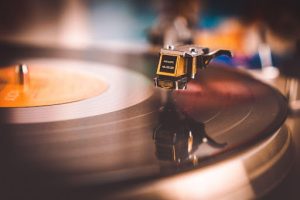Sound design is an often under-appreciated field, but it’s vital in many fields, including films, television, and, more importantly, music production. Sound has always been used to evoke emotion; that’s why minor chords register as “Sad” while major chords register as “Happy.”
If you want to be a music producer, you’ve got to learn how to create interesting sounds with your synth and DAW to bring out these same feelings in your listeners. Fortunately, we can help get you started. Read on!
Table of Contents
Gear Up
Before you can start shaking things up like Hans Zimmer, you’ll need a tiny fraction of his gear. We’re not saying you need a multimillion dollar musical setup, but there are some basics you’ll need to check off your list.
First off, you’ll need a studio microphone. This is essential if you want to properly pick up whatever sounds you’re making. Ensure that you get a mic that fits your budget, but also won’t make you sound like a bad impression of a robot. If you happen to get a dud mic, you might be able to salvage the sound with a pop filter and proper sound dampening in your recording room. So that’s input down. Next is output!
Not everyone will be listening to your music through headphones or in-ear monitors. True audiophiles usually have big speaker systems so they can blast their music loud and proud. You’ll need the same thing for sound design. Pick up a set of durable studio monitors so that you can get an accurate feel for what your final sound will, well, sound like.
Set the Vibe
One thing that sound designers for films have over music production is that they have the movie itself as a backdrop. They can match their sound effects or music to what’s happening on-screen. Unfortunately, music producers don’t have anything to match to.
Don’t get stuck thinking about having no backdrop, because this gives you more freedom to sculpt your sounds how you’d like! Without having to amplify or enhance the feeling of what’s on-screen, you can focus completely on what kind of vibe you want to create with your music.
It may help you set the vibe if you begin with a theme for an EP, then build on it until you have enough material for a whole album. Or if you don’t want to stick to a single concept, you can just jump around between genres and types of songs.
Visit a Library
Don’t worry, we don’t mean “hit the books.” Novice sound designers a few decades ago had to spend tons of time looking for other people’s recordings of samples and sounds that they wanted to use.
But you can avoid the hassle by picking up an audio library or a sample pack. Of course, you don’t have to do this. If you can create the sounds that you need to make a good track with equipment you have on-hand, so much the better!
However, before you start pumping out new DIY samples, you should pick up some good gear like studio monitors and microphones. Your tracks may sound divine to the average human listener, but if your computer and DAW can’t recognize it, it won’t translate into a good recording!
Practice Your A-D-S-R
This might be old hat to you, but we’re here to discuss the basics, so we have to cover ADSR. In case you’re not in the know, this stands for “Attack, Decay, Sustain, and Release.” This is a vital concept that dictates how your sound comes across to your listeners.
You’ll also find an ADSR called an “ADSR envelope” because it’s a kind of envelope. It’s important to add some context here: An envelope in music is what a sound will look like when charted on a graph (and specifically) when viewed within your DAW. You can also think of it as the direction or movement of a specific sound.
Now, let’s explain the big 4:
- Attack – This is how quickly a sound goes from pure silence to its full volume. The attack begins the second you press a key, so it usually happens immediately.
- Decay – Decay’s the direct opposite of Attack with a twist. Instead of being how long a sound “decays” from full volume back down to nothing, the endpoint of Decay is the Sustain, which you can choose. It could be 50, or 75, etc.
- Sustain – You might have heard Sustain described as a period of time, but it’s actually the volume of the sound from Decay to Release.
- Release – This is the final part and dictates the speed at which the sound fades out.
There’s a 5th factor to ADSR called “Hold.” The Hold is the period between Attack and Decay, where the sound “holds” at full volume. It’s like the prototype version of Decay.
ADSR and envelopes are one of the fundamentals of sound design, plus learning to master them will help make your music more interesting and engaging, so be sure to get some practice in! Practice makes perfect, even if you’re just messing around in a DAW!
Don’t Forget Mastering
Sound designers and music producers can be different people, but in your case you’re practically a one-man team, so you shouldn’t neglect the final step in the production process: Mastering!
Once you’ve got all your tracks settled, translated into something that your DAW can recognize, and properly arranged, it’s time for one last listen! (Or several last listens.) Raise the volume on any instruments that seem too soft, and ensure that whatever instruments you raise won’t drown out the others. This evolved version of mixing is the last step before your music is ready for a full release.
Identify any sources of interference or random sounds that may distract the listener, and keep your song consistently pleasant to listen to, but not boring. (Unless that’s what you’re going for!)
Your mix may never be perfect, but you can get it really close!
Conclusion
Practice your craft, and you’ll soon begin to hear the applications of good (and not-so-good) sound design in everything you listen to. Focus on the vibe, and ensure that your music evokes feelings in others!




